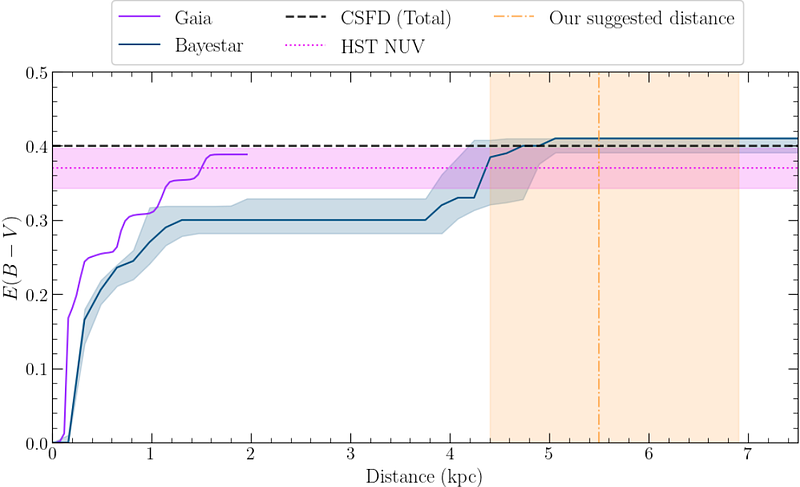On the distance to the black hole X-ray binary Swift J1727.8$-$1613

On the distance to the black hole X-ray binary Swift J1727.8$-$1613
Benjamin J. Burridge International Centre for Radio Astronomy Research, Curtin University, Perth, Australia, James C. A. Miller-Jones International Centre for Radio Astronomy Research, Curtin University, Perth, Australia, Arash Bahramian International Centre for Radio Astronomy Research, Curtin University, Perth, Australia, Steve R. Prabu International Centre for Radio Astronomy Research, Curtin University, Perth, Australia, Reagan Streeter International Centre for Radio Astronomy Research, Curtin University, Perth, Australia, Noel Castro Segura Department of Physics, University of Warwick, Coventry, UK, Jesús M. Corral Santana European Southern Observatory, Santiago, Chile, Christian Knigge School of Physics & Astronomy, University of Southampton, Southampton, UK, Evangelia Tremou National Radio Astronomy Observatory, Socorro, USA, Francesco Carotenuto INAF-Osservatorio Astronomico di Roma, Monte Porzio Catone, Italy, Rob Fender Astrophysics, Department of Physics, University of Oxford, Oxford, UK, Payaswini Saikia Center for Astrophysics and Space Science, New York University Abu Dhabi, Abu Dhabi, UAE
AbstractWe review the existing distance estimates to the black hole X-ray binary Swift J1727.8$-$1613 with a discussion of the accuracies and caveats of the associated methodologies. As part of this, we present new line-of-sight HI absorption spectra captured using the MeerKAT radio telescope. We estimate a maximum radial velocity with respect to the local standard of rest of $24.8 \pm 2.8$ km s$^{-1}$, which is significantly lower than that found towards an extragalactic reference source. Given the location of Swift J1727.8$-$1613 at Galactic longitude and latitude $(l, b) \approx (8.6\deg, 10.3\deg)$, we explore the feasibility of the HI absorption method. From this we derive a near kinematic distance of $d_{\rm{near}} = 3.6 \pm 0.3\ (stat) \pm 2.3\ (sys)$ kpc as lower bound for the distance to Swift J1727.8$-$1613. We compare our results with those derived from different distance determination methods including the use of colour excess or reddening along the line of sight, which we constrain to $E(B-V) = 0.37 \pm 0.01\ (stat) \pm 0.025\ (sys)$ using near-UV spectra. By combining this with donor star magnitudes reported by Mata S\'anchez et al. (2024b), we suggest an increased distance of $5.5^{+1.4}_{-1.1}$ kpc, which would imply a natal kick velocity of $190 \pm 30$ km s$^{-1}$.